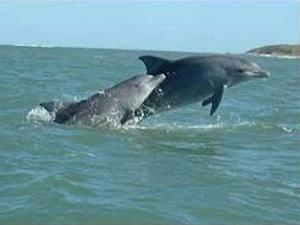Paula Laporta
Other projects
28 Nov 2005
Management and Conservation Plan for Bottlenose Dolphin Population in the First Marine Protected Area Proposed in Uruguay
This project aims to determine population size, distribution, movements and habitat use of bottlenose dolphins in Uruguayan coast and regionally, in order to identify critical habitats and population stocks.

Bottlenose dolphin in La Coronilla-Cerro Verde, Uruguay.
This project intends to determine the distribution, population size and habitat use of bottlenose dolphins Tursiops truncatus occurring in La Coronilla-Cerro Verde and Cabo Polonio, Uruguay. Currently the government includes these localities in the national system of protected areas as the first ones. This study will enable to identify the critical areas for this population, as well as, the population size and individual movements between southern Brazil, where there is evidence of high mortality due to interactions with fishing operations. In the last three years photo-identification surveys have been conducted in La Coronilla-Cerro Verde and Cabo Polonio and our catalogue has been compared with that of the neighbouring population (Patos Lagoon, Brazil) with the objective of determining residence, movement patterns and home range of this population.

Paula Laporta in a photo-id session in La Coronilla, Uruguay.
During Winter and Spring 2007 we detected that individuals frequently observed in Uruguay also occurred in the adjacent waters of Patos Lagoon, indicating that at least some movement among sites is taking place. Uruguay is situated among two regions where there are advanced studies on bottlenose dolphins, so this research would help fill this gap of basic ecological information. It is essential to characterize the movement patterns soon because the Patos Lagoon population is endangered due to a high incidental mortality. As dolphins observed in Uruguay could be part of this population, it is crucial to provide information that helps determine population stocks, as they should be considered as separate units or only one at the time of designing strategies for management and conservation of the species in the South-western Atlantic Ocean. Conservation activities will be carried out to intensify local people’s ecological awareness about their identity and the importance of the coastal environment, focusing on school children discussing the role of small cetaceans in the marine ecosystem and the importance of their conservation.
In addition, we will organize workshops with local communities and tourist to promote their ecological awareness. Within the framework of the recently developed National System of Protected Areas in Uruguay, the results of this study will be crucial for the elaboration and implementation of local conservation strategies for this species.